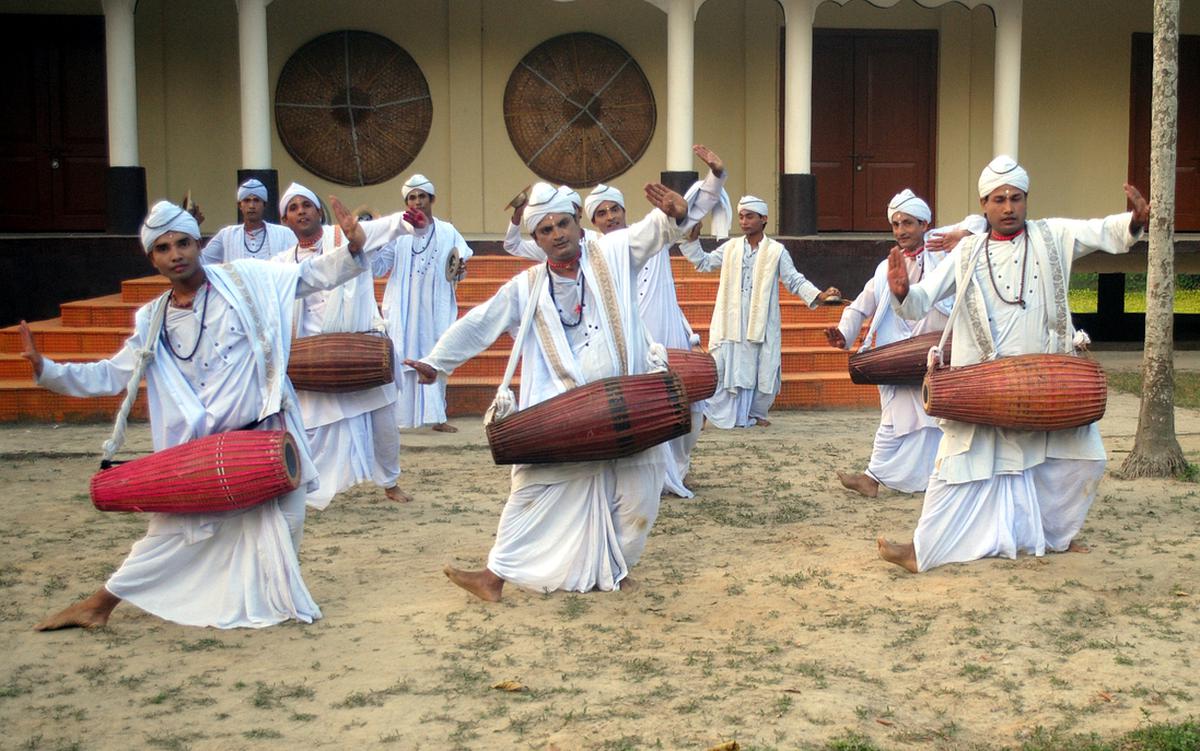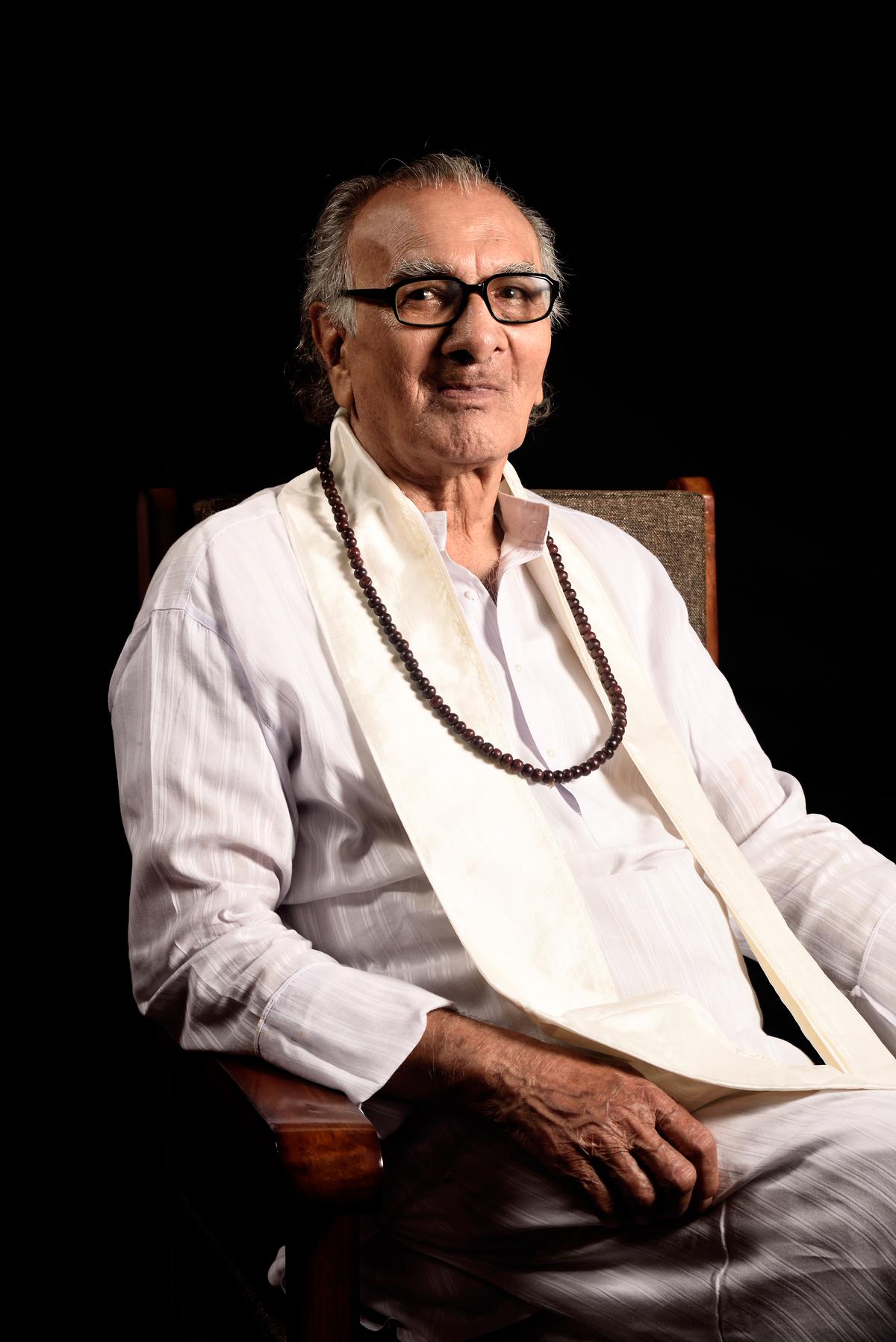Jatin Goswami, a revered Sattriya guru, performer, choreographer and scholar, has worked tirelessly since the 1960s to popularize the dance form, which originally originated mainly in the Sattriyas (monasteries) on Majuli Island in the Brahmaputra River. It was the medium of worship. In other parts of Assam, he established dance institutes like Pragjyoti Kala Kendra, Alok Shilpi Sangha and Sattriya Academy will train many young enthusiasts. Apart from contemporaryizing its technique and repertoire to take Sattriya to a worldwide audience, he has authored several books on the nearly 500-year-old journey of the dance form. Due to the efforts of prominent artists like him, Sattriya was given a classical status in the year 2000. The latest in the long list of honors and awards received over the years, is the Sangeet Natak Akademi Fellowship. He talks about how, despite the religious component being the defining feature of the dance form, he has tried to showcase its artistic and creative aspects.
How did you get attracted to learning Sattriya?
l had the privilege of being born and brought up in a Satra (monastery of Assam). As a child, I could watch elaborate performances of dance and Ankiya Bhaona (dance-drama) performed on Janmashtami to pay homage to Srimanta Sankardeva and Sri Sri Madhavdeva. Even on normal days there used to be dance rehearsals in the evening. So I don’t remember exactly when I was formally introduced to the dance form; It was actually an important part of my growing up years. After that, I started playing different roles. Our Satra followed the Bordova thul (style of dance).
How was the experience of training under different gurus?
l My first gurus in the session were Babula Bayan and Gopiram Bayan. In 1962, I met Rasheshwar Saikia Borbayan and lived with him for about five years. It was then that I started learning the dance of Kamalabari Thal, which is now the most commonly performed form. Later, I had the opportunity to train exclusively under Kalaguru Bishnu Prasad Rabha, especially including the theoretical aspects of dance Dramaturgy And this shrihastmuktavali,
How would you describe Sattriya dance and its philosophy?
The original purpose of Sankardeva’s creation of Sattriya was to use the medium of art to propagate his philosophy of ‘Ek Sharan Bhagwati Dharma’. The original philosophy was that of ‘Krishna Ek Dev Dukhari’ or ‘Ek Krishna’, meaning the existence of a ‘universal power’. Thus, between each performance, the phrase ‘Nirantare Hari Bol’ is repeated. Hence, most of the sentiments revolve around devotion and each performance begins with Arpan Bhangima (prayer). Even today these arts are practiced by male monks as part of religious rituals.
A women’s troupe performing Sattriya under the leadership of Krishnakshi Kashyap | Photo Credit: Special Arrangement
When did Sattriya’s transition from math to stage take place?
For nearly 500 years, it was mostly confined to the Seventies. Even though Sattriya was performed for the first time in 1958, at the Sangeet Natak Akademi symposium in New Delhi, it took time for the dance to gain popularity among the masses. Eventually, the Sangeet Natak Akademi recognized it as a classical dance. It was my mentor, Rasheshwar Saikia Barbayan, who first started training women.
A much-publicised move, it is said to have caused him to leave the session. But now, Sattriya is mostly performed by female dancers, unlike earlier, when it was performed only by male monks. When it was taught to women, some modifications had to be made, mainly in the matter of dress. The dance style was also changed to suit the stage. Even in the case of music, everything had to be synchronized and in tune to make the presentation more sophisticated. Repetitions were also removed to fit individual pieces to the standard repertoire. But everything was done keeping in mind the traditional norms.
What do you think makes Sattriya Music unique?
El Sattriya is supported by a rich treasury of musical literature, written by the two sages, and an independent musical setting with its own talas and ragas. There are many ragas and talas with similar names in other music styles, but the singing technique and the tempo are vastly different. Furthermore, in Hindustani music, Sam Where song, music and dance are usually combined in the first house clap, But in Sattriya music, Sam happens at the end clap,

Vocal performance in Kamalabari session. Photo Credit: Special Arrangement
You have to your credit several choreographic works that have made a huge impact on the Sattriya repertoire. How do you balance traditional elements and modern sensibilities?
l Over the years, I have strived to create new works to reflect the changing times. Any Sattriya traditional piece includes Ramdani, Geetor Naach and Mela Naach, and sometimes, only the first two. The acting in these pieces is very limited. But acting is important part of Ojpali dance and Ankiya is some part of Naats. Therefore, there was a need to include Sattriya-based acting compositions in the repertoire and this inspired me to compose new compositions, most of which are based on texts from Sankardeva or pre-Shankardeva era. Whatever be the type of choreography, Sattriya’s style, music and philosophy should be maintained and the message behind the work should reach the audience.

What are your thoughts on using art to address issues and create social awareness?
The aim of any art form should be the betterment of the society. The Sattriya dance was introduced to propagate the Vaishnava ideology. If no thought-provoking message can be put forward through it, then the dance will have no meaning. And if today Sattriya dance can be used as a tool to address contemporary social issues, then it becomes our duty to work towards it.
Do you think digital technology and social media have a role to play in popularizing ancient art forms?
This dance form survived through the Satra culture, oral traditions and the guru-shishya parampara. In today’s fast-paced world, digital technology and social media will play an important role in enabling dance communities to reach large audiences in a very limited amount of time, whether through performance, teaching or research.
Looking back at your long journey in dance, what challenges did you face as a young practitioner? Do you think the situation is better today?
L had to face many difficulties. Those who did not belong to the sattars were not taught to dance. Sometimes, those who belonged to one session were not allowed to learn in the other session. Also, it was beyond the imagination of the society that dance could be a profession. That’s why many were not interested. This mindset has completely changed. Governments, media and organizations are now patronizing and supporting the arts, and so the opportunities have definitely increased.
I feel young practitioners should take Sattriya to the world through demonstrations that are aesthetically pleasing and theoretically correct. They should see art not as entertainment but as prayer.
based in Guwahati The author is a well known Sattriya artist.